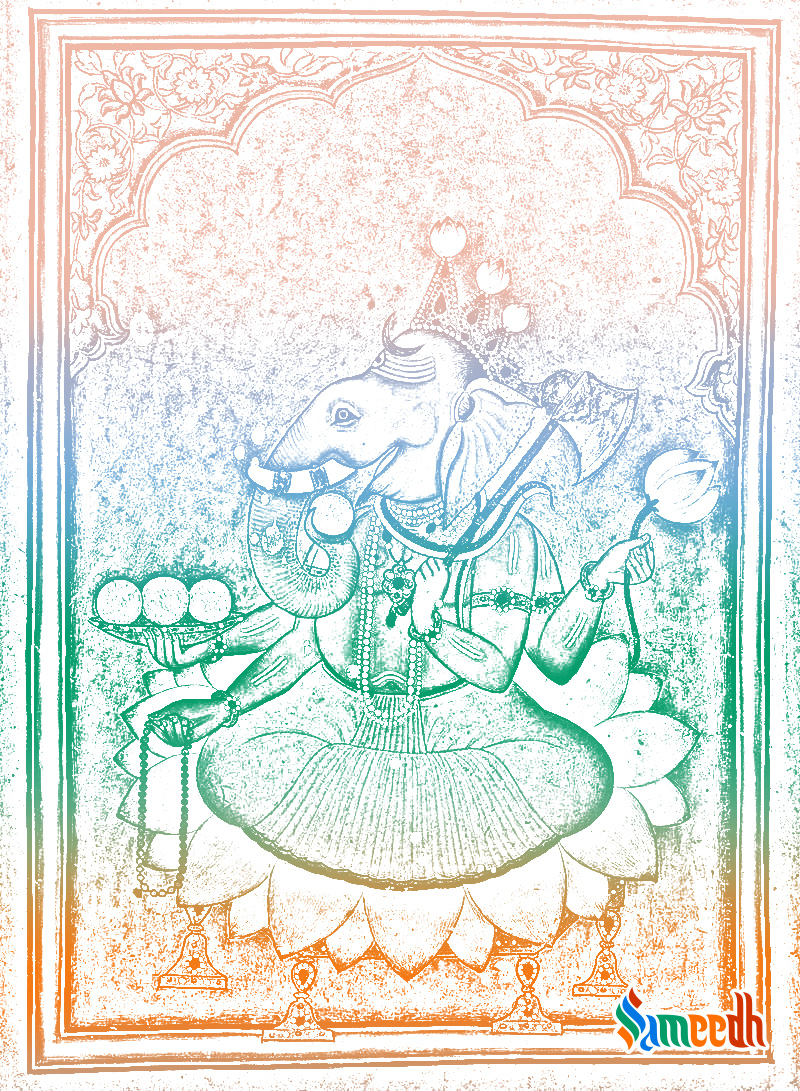The divine widely popular elephant headed god associated with knowledge and the son of Lord Shiva.
Ganpati or Ganesh is an extremely popular elephant-headed, potbellied Hindu deity. There are several meanings of his name originating from Sanskrit. Gana is believed to be a group of people and Isha or Pati is associated with master or lord, equating to the lord of people. Ga and na separately also translate to intellect and wisdom respectively, making Ganpati the god with profound knowledge. He is the son of Shiva, the god of destruction, and Parvati. Ganpati is believed to be the destroyer of obstacles. If one faces a challenge in any aspect of their life in the form of obstruction, praying and invoking the blessings of lord Ganpati are deemed to bring solutions quickly. The Indian festival of Ganesh Chaturthi is celebrated to embark and honour Ganesh’s birth.
Family
One of the famous tales of his origin is a widely known one. His mother, goddess Parvati is said to have collected the dirt off of her body while bathing and kneaded it into the shape of a child. With her divine powers, she put life into the human structure she had designed with her spiritual energies and happily accepted him as her son. Her husband, lord Shiva was not made aware of it so when he found Ganesh outside his house barring him from entering, the god of destruction grew furious and chopped off Ganesh’s head. Parvati was heartbroken to know this and ordered Shiva to bring her son back to life. With such a hurry, Shiva went to search for a head and used the first one in the sight, which was of an elephant. He placed that elephant head on Ganesh’s lifeless corpse and joined them, giving another life to the body. While attaching the head, one of Ganesh’s tusks broke off and till date all the images of his are shown with him having a broken tusk.
His younger brother is Kartikeya, the god of war. Although it is sometimes believed that Ganpati remained a celibate, his consorts are Riddhi and Siddhi, portraying prosperity and spiritual forces.
Physical Attributions
This god is identified clearly with his multiple intriguing features. The elephant head in itself depicts intelligence as that animal is known for its exceptional smartness. On his head, he is bestowed with wide ears. Such ears illustrate his ability to listen and acquire knowledge, the ability to absorb information quickly and effectively, elaborating on his learnings. The cobra wrapped around his big belly is a symbol that he is the esteemed son of Shiva, who himself has a serpent surrounding his neck. His potbelly is known to engulf multiple Universes, the infinite knowledge they carry within. His stomach protects everything that lies within, the energies and wisdom. It also indicates his love and hunger for food. He has four arms, representing the four attributes of the inner body; Manas – Mind, Buddhi – Intellect, Ahamkar – Ego and Chitta – Senses and conscience. The hands carry an axe, a lotus, a whip, sometimes sweets and he simply holds up an open palm in devotion and blessing his followers. He sits on the lotus flower, radiating purity and divine energy.
An offering of modak, an Indian sweet dumpling, Ganesh’s favourite snack, is often made while performing rituals and worshipping the deity. His ride is a rat, or Mooshak, the symbol of wisdom. Rats are known to trace their way out from the deepest and darkest of tunnels with speed and alertness. Similarly, lord Ganesh assists in overcoming hurdles by displaying the path of light towards success, wealth, health, knowledge and progress.

